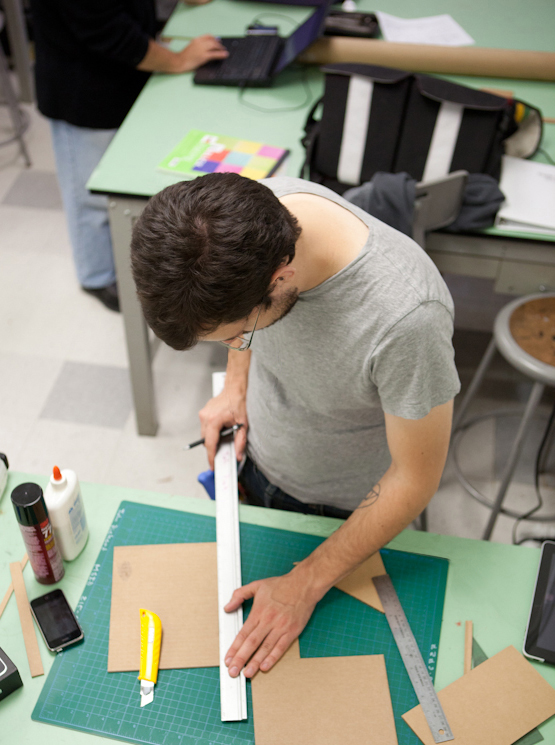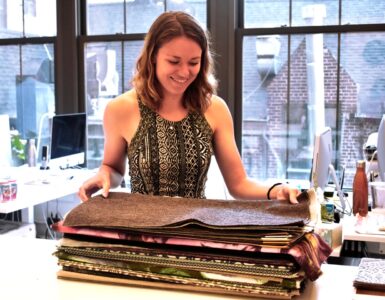By Chris Cavender
(BsID ’27)
An Industrial Designer needs to have a wide range of skills and that’s what I’m learning in the Jefferson ID program, from team collaboration and communication skills to technical abilities like soldering and prototyping. Above all, the most valuable thing I’m learning is how to guide a project through the iterative design process. Understanding that no project is ever truly done, knowing that there are always ways to improve and then continuing to revise the design until that improvement achieved is the basis of the iterative process. Personally, it’s the best lesson I’ve learned so far: No matter how perfect a project seems, it will still benefit from testing, revising and enhancing.
There’s a real variety to what we do on a day-to-day basis in the ID program. Materials are the first thing that comes to mind. Beginning with paper and pencil, we gradually evolve our ideas into three dimensions using chipboard and foamboard, eventually moving to wood and metal for our more advanced protoypes. Dedicated drawing classes help sharpen our visualization skills while our Design Studio classes teach us process and precision using a wide range of tools from XActo knives to table saws to laser cutters.
If you’re saying to yourself: “I’ve never worked with any of that stuff”, don’t worry! Many students come into the program without prior experience and I was one of them. I’ll admit, one of the scariest things was going into the Prototyping Shop and working with the machines. But the training I got gave me confidence and now I’m comfortable with the wide range of tools at our disposal.
The freshman Industrial Design experience at Jefferson is a real bootcamp of skills. New concepts are taught every day, but never without the time and means to pick up the skills. After just the first semester you’ll have the tools you need to move forward into the upper levels of the ID program with confidence.







Add comment